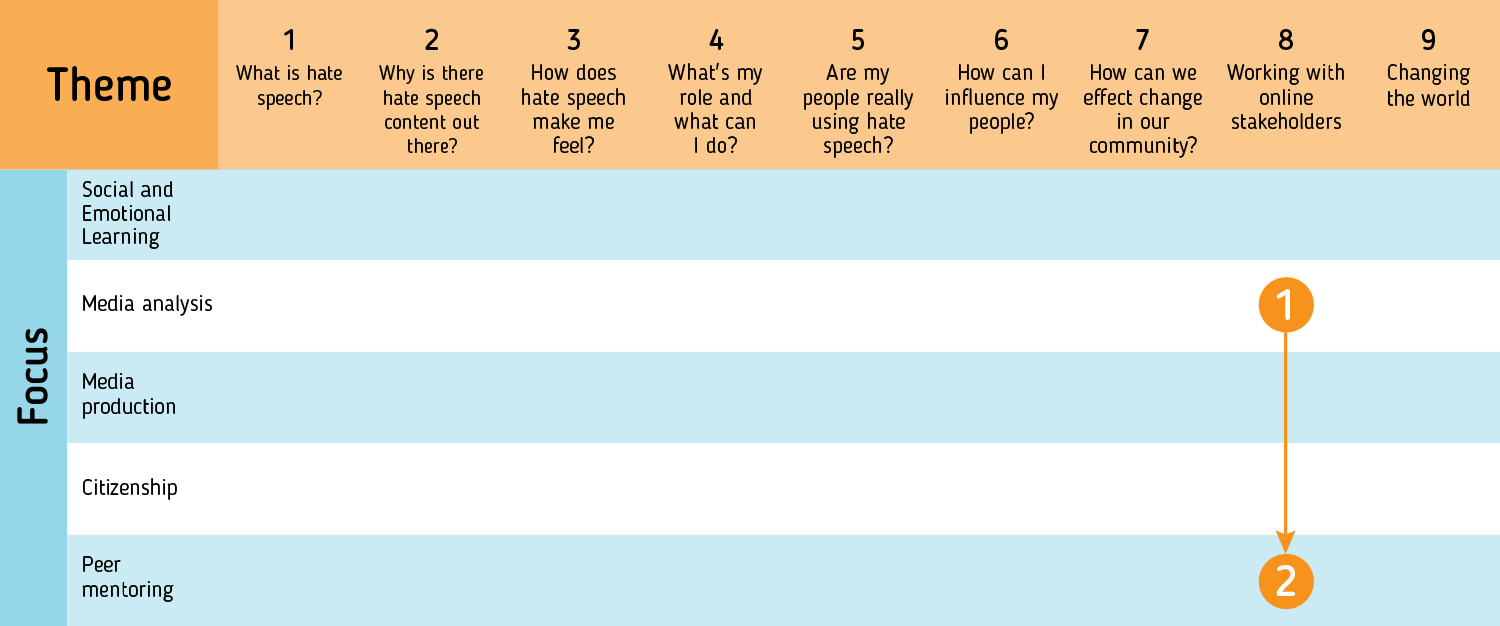Pathway 3: Working with online stakeholders
In this section, we suggest a possible pathway you can work through when putting SELMA into practice as part of a peer mentoring scheme. Please note that this is by no means restrictive; SELMA has been designed as an open and flexible framework which you can adapt to the needs, level and interests of the group(s) you work with. The SELMA journey articulated below has been developed for illustrative purposes, to give you a suggested ‘way in’ to the toolkit if you’re not sure where to start. However, we would certainly encourage you to explore the toolkit and use it creatively!

After ensuring that young people are clear about the definition of hate speech, begin the activity from the ‘Media Analysis’ focus. Use the ‘Questions to ask’ to stimulate discussion and explain that you will be running an activity where young people will have to think about the most appropriate social media platform for their anti-hate speech campaigns. Learners will link social media platforms with corresponding messages, and then discuss why they made the choices they did. Whilst this activity is primarily designed to get young people thinking about how to build campaign audiences online, it’s also a useful opportunity to get them to reflect about how our communication style is shaped by our choice of social media platform (which is a good bridge to the next activity).
Once you have completed the activities in the ‘Media Analysis’ focus, move on to the ‘Peer Mentoring’ focus. Run the first activity (‘Creating a safe space online’). This activity encourages young people to think about what we mean when we describe an online space as “safe” or “unsafe” and to critically engage with the implications of decisions around things like user anonymity and various forms of content moderation for how people experience social media environments.
